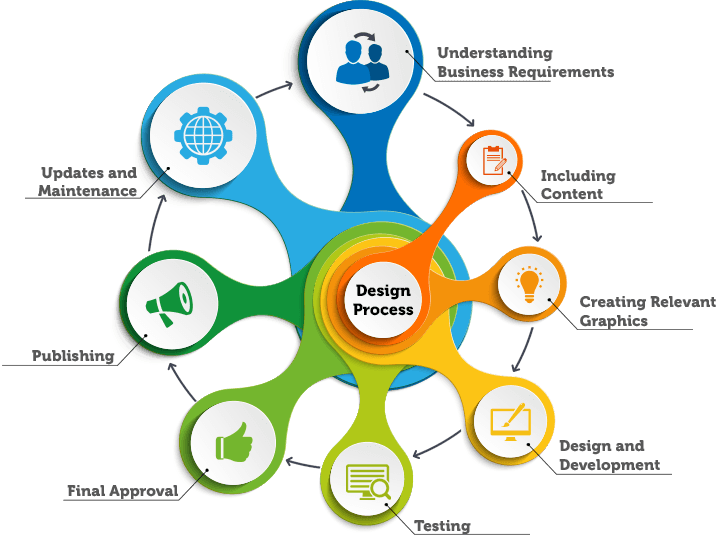Analysis The first step is understanding client requirement and the various dynamics around the clients existing systems, as the website or web application will eventually be integrated into this system. The analysis will then cover all the aspects of clients’ business and their needs especially on how the website is going to be merged with their existing system.
Communication Preliminary specifications are drawn up by covering up each and every element of the requirement. For example if the product is a web site then the modules of the site including general layout, site navigation and dynamic parts of the site should be included in the spec.
Planning After the specification building, work on the website is commences after receipt of the signed proposal, a deposit, and any written content materials and graphics you wish to include. In this stage the layouts and navigation will be designed as a prototype.
Designing Some customers may be interested only in a full functional prototype. In this case we may need to show them the interactivity of the application or site. But in most of the cases, the customer may be interested in viewing two or three design alternatives with images and navigation
Testing Unlike software development, web based applications need intensive testing, as the applications will always function as a multi-user, multi-tier system with bandwidth limitations. Some of the testing which should be done are, Integration testing, Stress testing, Scalability testing, load testing, resolution testing and cross-browser compatibility testing. Both automated testing and manual testing should be done without fail.
Maintaince Web sites will need quite frequent updates to keep them fresh and relevant. In such a case, we need to do analysis again, and all the other life-cycle steps will be repeated. Bug fixes can be done during the time of maintenance.




